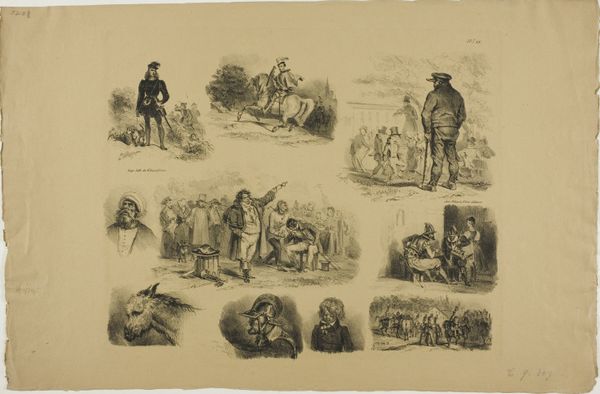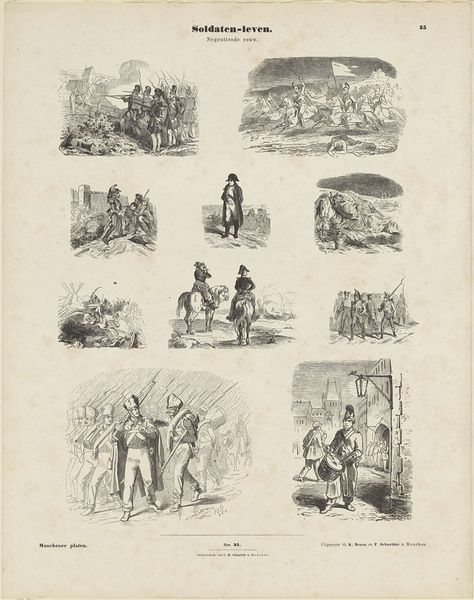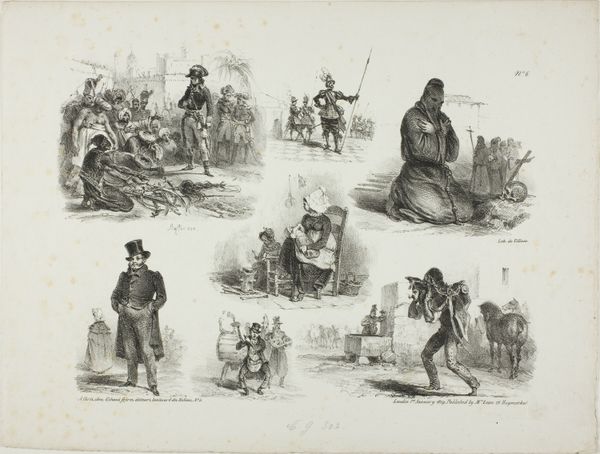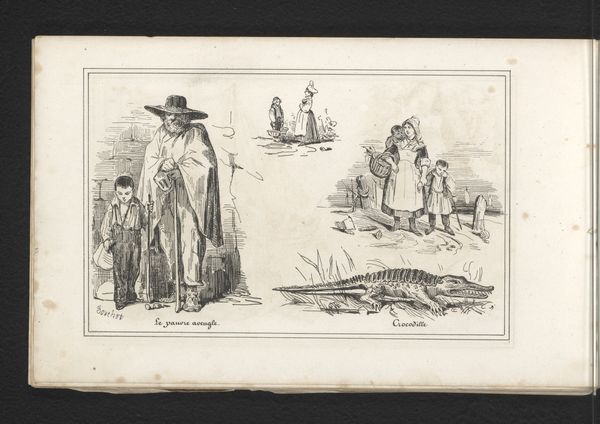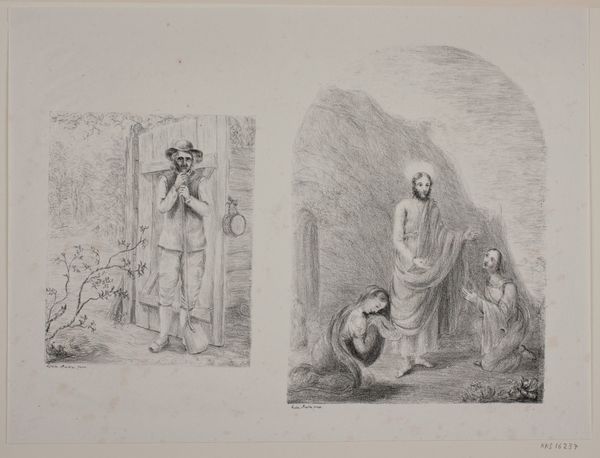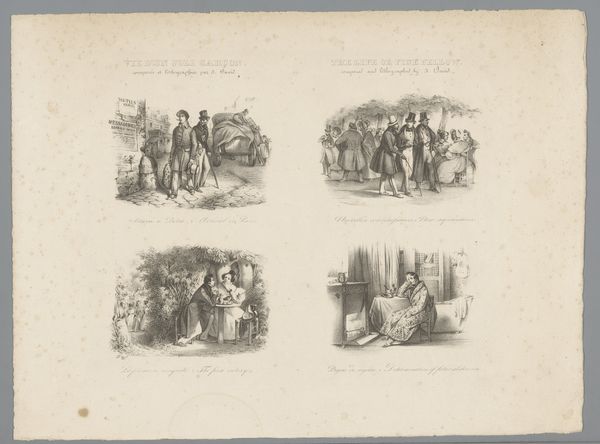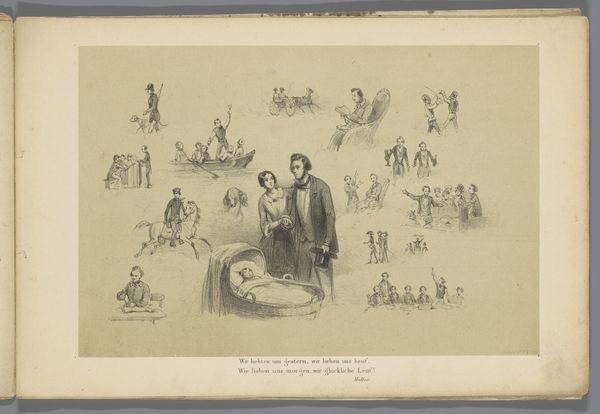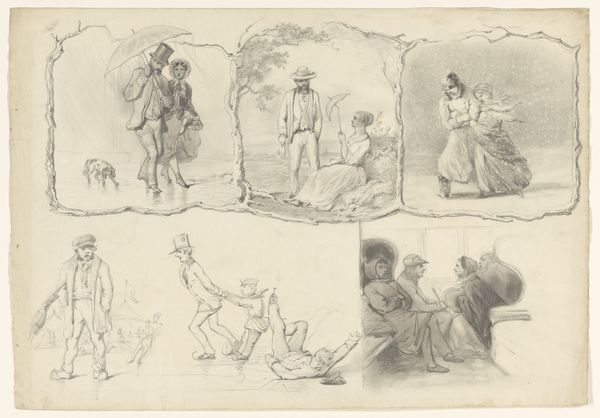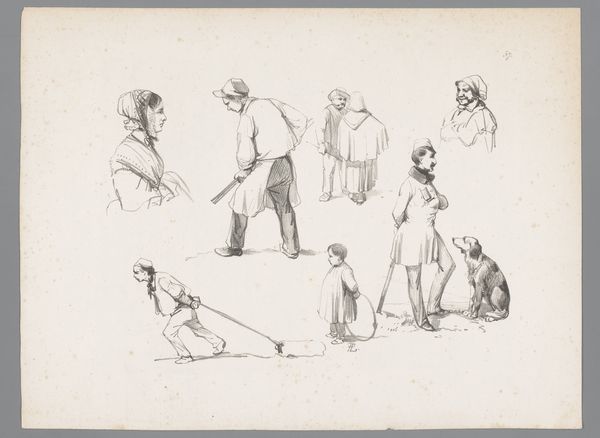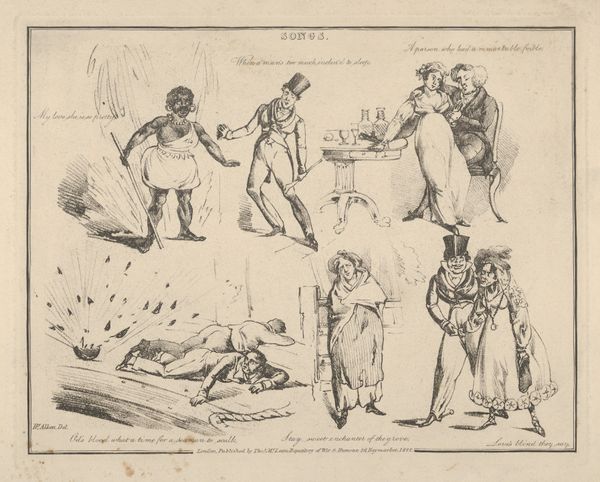
drawing, lithograph, print, paper, pen
#
portrait
#
drawing
#
narrative-art
#
lithograph
# print
#
figuration
#
paper
#
pen
#
genre-painting
Dimensions: height 343 mm, width 465 mm
Copyright: Rijks Museum: Open Domain
Curator: This lithograph by Auguste Raffet, titled "Verschillende taferelen van langs de Donau" or "Various scenes along the Danube," was created around 1848. It's a work that captures, quite literally, various scenes of life near the Danube River. What strikes you immediately? Editor: The stark contrast! Black and white, sketched figures against a flat, undefined background. The composition feels fragmented; a collection of vignettes rather than a cohesive image. Curator: That fragmentation is key. Raffet was interested in depicting different social types and their activities. If we examine these characters, there’s the common man but also soldiers and traders, suggesting themes of both labour and the power structures affecting it, yes? Editor: Certainly, and it's rendered with striking contrasts. See how his skillful application of shading lends form to these people; his clever technique lends the drawing a crisp sense of visuality. Curator: Indeed, and let's remember the social and political landscape of 1848. Revolutions were erupting across Europe, challenging existing power structures. Raffet, known for his Napoleonic imagery, here offers glimpses of everyday life possibly affected by broader conflicts and the empire. Editor: Is there not a formal tension though? He depicts many different people within this work, with such limited detail and colour; does he aim for us to fill in the blanks ourselves, perhaps to look internally for commonality with the Danube dwellers he captures here? Curator: That's a very pertinent point. Raffet isn't making a grand statement, instead capturing fleeting moments of everyday life. By grouping all his captured figures, he asks us to engage with an implicit contrast: is there any actual unification in their existences, or is life near the Danube instead a lonely, segmented one? Editor: Very profound. Well, I find myself intrigued by his choice to use print to reflect this idea. The very form is reproducible, but contains so much space and sparseness. Curator: Well said. Perhaps Raffet aimed to reproduce many individual stories, so that those many reproduced, small, individual perspectives could challenge the existing great power narratives. Editor: Precisely. Thinking about its fragmented format in contrast to how clearly we still understand these sketched men is very inspiring! Curator: It leaves a lasting impression about not just people on the Donau, but society at large.
Comments
No comments
Be the first to comment and join the conversation on the ultimate creative platform.
